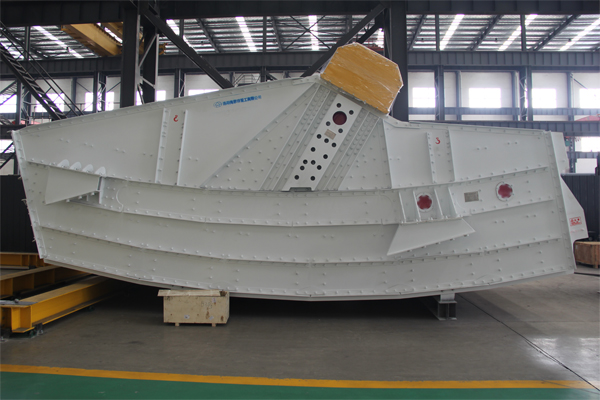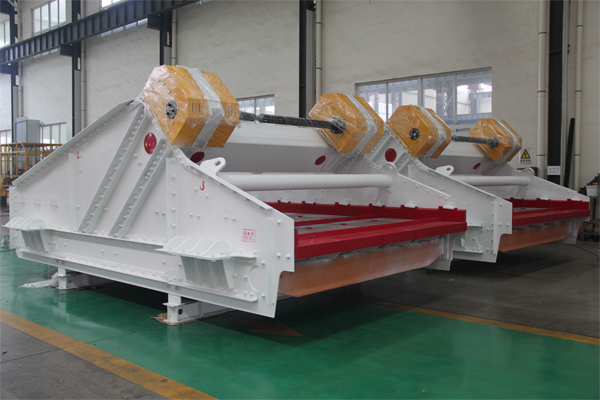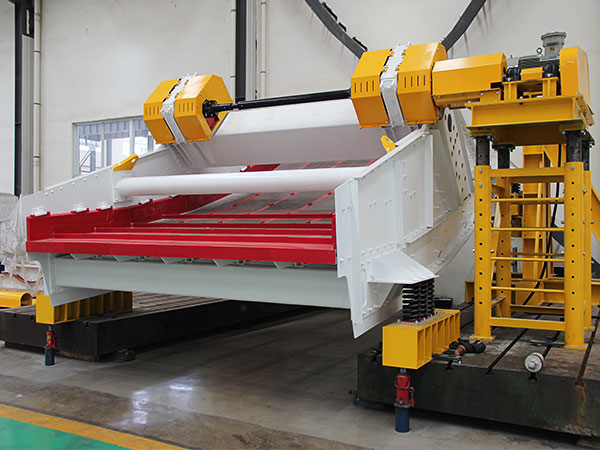What materials can be screened with a linear vibrating screen
Linear vibrating screens are highly versatile and can be used to screen a wide range of materials across various industries. The key is that the material needs to be able to flow and separate based on size when subjected to linear vibration.
Linear vibrating screen can screen materials

1. Mining & Quarrying:
* Ores: Iron ore, copper ore, gold ore, bauxite, manganese ore, etc. (for sizing, scalping, desliming)
* Coal: Sizing, dewatering, desliming
* Aggregates: Sand, gravel, crushed stone (for sizing into different product grades)
* Limestone, Granite, Basalt: For producing various construction materials
* Phosphate Rock, Potash: For fertilizer production
* Industrial Minerals: Clay, silica sand, feldspar, talc
2. Construction & Building Materials:
* Sand & Gravel: Grading for concrete and asphalt
* Crushed Stone: Sizing for road base, concrete aggregate
* Cement Raw Materials: (e.g., limestone, clay before grinding)
* Asphalt Reclaim (RAP): Sizing reclaimed asphalt pavement
* Lightweight Aggregates: Expanded clay, shale, perlite
3. Recycling & Waste Management:
* Construction & Demolition (C&D) Waste: Separating soil, aggregates, wood, plastics
* Municipal Solid Waste (MSW): Pre-sorting, separating organics
* Compost & Soil: Removing oversized particles, contaminants
* Glass Cullet: Sizing for recycling
* Plastic Flakes/Pellets: Sizing, removing fines
* Wood Chips, Sawdust, Bark: Sizing for fuel, mulch, or particleboard
* Scrap Metal: Removing dirt and fines
4. Agriculture & Food Processing:
* Grains: Wheat, corn, rice, barley, oats (cleaning, sizing)
* Seeds: Sizing and cleaning various crop seeds
* Fertilizers: Granular or powdered (sizing, de-dusting)
* Animal Feed: Pellets, crumbles (sizing, removing fines)
* Sugar, Salt: Sizing, de-lumping
* Flour, Spices, Coffee Beans, Tea Leaves: Sifting, grading
* Nuts & Legumes: Sizing, removing shells or debris
* Fruits & Vegetables (sometimes): For gentle sizing or dewatering of certain robust types

5. Chemical & Pharmaceutical Industries:
* Plastic Pellets & Powders: Sizing, de-dusting
* Resins: Sizing
* Detergent Powders: Sizing, de-lumping
* Pharmaceutical Powders & Granules: (often specialized, hygienic designs)
* Various Chemical Salts & Compounds: (e.g., soda ash, catalysts)
6. Foundry & Metallurgy:
* Foundry Sand: Reclaiming, sizing, removing lumps and tramp metal
* Metal Powders: Sizing
7. Ceramics & Glass:
* Clay, Kaolin: Sizing, removing impurities
* Silica Sand: For glass manufacturing
* Frit & Glaze Powders: Sizing
Key Characteristics of Materials Suitable for Linear Screens:
Dry or Wet: Linear screens can handle both dry screening and wet screening (dewatering, desliming).
Granular, Powdery, or Lumpy: As long as the material can flow.
Wide Range of Particle Sizes: From coarse scalping down to finer separations (though very fine powders might require specialized screens or other technologies).
Abrasive or Non-Abrasive: Screen decks can be made from various materials (steel, polyurethane, rubber) to handle abrasion.

Applications where Linear Vibrating Screens excel:
Sizing/Grading: Separating material into different size fractions.
Scalping: Removing oversized material.
Dewatering: Removing excess water from solids.
Desliming: Removing fine particles (slimes) from coarser material, often with water.
Fines Removal/De-dusting: Removing very small particles.
Trash Removal: Removing unwanted debris.
Essentially, if you have a bulk material that needs to be separated by particle size, and it can flow under vibration, a linear vibrating screen is likely a suitable option to consider.



